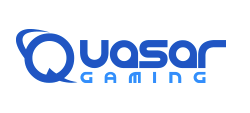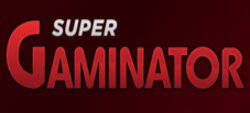Avoiding Payout Disputes Strategies and Best Practices
Establish clear and detailed contracts before any business engagement. Define payment terms, deliverables, and expectations explicitly within the contract. Use precise language to leave no room for ambiguity. Ensure both parties have a thorough understanding of their obligations to reduce misunderstandings.
Communicate regularly throughout the project lifecycle. Schedule check-ins or progress updates to maintain alignment on goals and intermediate outcomes. Engage in open dialogue to address potential concerns before they escalate into disputes. This proactive approach can reinforce relationships and clarify any misinterpretations.
Utilize a reliable invoicing system that tracks payments, deadlines, and outstanding balances. Implementing automated reminders for upcoming payments can prompt timely actions from both sides. Regularly review financial records to confirm accuracy and transparency, laying down a solid foundation for accountability.
Establish a formal dispute resolution process. Define steps both parties agree to follow when conflicts arise. Consider mediation or arbitration as viable alternatives to litigation. This reduces the likelihood of disputes escalating and can lead to fair resolutions that maintain business harmony.
Establishing Clear Contract Terms and Conditions
Clearly defined contract terms and conditions form the backbone of successful business transactions. Start by outlining the scope of work, detailing specific responsibilities, deadlines, and deliverables for all parties involved. This clarity minimizes ambiguity and sets expectations from the outset.
Incorporate precise payment terms. Specify the amount to be paid, the payment schedule, accepted methods, and consequences for late payments. Ensure both parties agree and understand these terms to avoid disputes later.
Include provisions for changes and modifications. Specify how amendments to the contract can be proposed and authorized, ensuring all parties are aligned on the process. This adaptability helps manage unforeseen circumstances while maintaining transparency.
Outline how disputes will be resolved. Define the methods for conflict resolution, whether through negotiation, mediation, or arbitration. A clear dispute resolution process reduces the risk of escalation and encourages collaborative problem-solving.
Integrate confidentiality clauses if necessary. Protect sensitive information by detailing what constitutes confidential data and the obligations surrounding its use. This helps safeguard proprietary interests and fosters trust among parties.
Lastly, ensure both parties review the entire document thoroughly. Encourage questions and discussions to clarify any uncertainties before signing. By establishing clear terms and conditions, businesses can prevent misunderstandings and build strong, reliable relationships.
Implementing Robust Documentation Practices
Establish clear and consistent documentation protocols across all business operations. Use standardized templates for contracts, agreements, and communication to ensure uniformity and clarity. This approach minimizes misunderstandings and streamlines the review process.
Maintain a centralized repository for all documents. Utilize cloud-based storage solutions that allow for easy access and collaboration among team members. Organize files by category, date, and project to enhance retrieval efficiency.
Regularly update documentation to reflect changes in agreements or procedures. Schedule quarterly reviews of all critical documents to identify and correct any discrepancies. This practice keeps your records current and reduces the risk of disputes arising from outdated information.
Incorporate detailed records of communication, including emails, meeting notes, and verbal conversations. This creates a reliable audit trail that can clarify intentions and agreements when disagreements occur. Ensure that all team members understand the importance of documenting their interactions.
Train employees on proper documentation practices. Workshops focusing on the significance of meticulous record-keeping can enhance understanding and compliance. Encourage a culture of transparency where documentation is viewed as a valuable tool for preventing conflicts.
Implement version control for all key documents. Use software that tracks changes and maintains a history of revisions. This way, all parties can reference previous versions if disputes arise, offering clarity on what has been agreed upon over time.
Finally, ensure that all documentation is legally compliant and relevant to your industry. Consult legal experts to review key contracts and policies to mitigate potential risks. This step reinforces the integrity of your documentation practices.
| Documentation Type | Best Practices |
|---|---|
| Contracts | Use clear language, include specific terms, and utilize templates. |
| Meeting Notes | Record attendees, topics discussed, and action items promptly. |
| Email Communication | Summarize discussions and confirm understandings in follow-up emails. |
| Change Logs | Document all revisions with dates and explanations for accountability. |
Maintaining Open Communication Channels with Stakeholders
Establish regular check-ins with stakeholders to share updates and gather feedback. Schedule weekly or monthly meetings, depending on project timelines. This consistency builds trust and keeps everyone informed about progress and potential issues.
Utilize various communication platforms. Depending on stakeholder preferences, use emails, instant messaging apps, or collaboration tools. This flexibility ensures that everyone can communicate in a way that suits them best.
Encourage an open-door policy for discussing concerns. Create an environment where stakeholders feel comfortable voicing their opinions and asking questions. Addressing issues early helps prevent misunderstandings from escalating.
Share project milestones and performance metrics transparently. Provide stakeholders with access to dashboards or reports that highlight key achievements and challenges. This transparency fosters accountability and emphasizes collective responsibility.
Solicit feedback actively after meetings or project phases. Utilize surveys or informal discussions to collect input on communication effectiveness. Implement changes based on this feedback to continuously improve engagement.
Recognize contributions from stakeholders regularly. Public acknowledgment of their input strengthens relationships and encourages ongoing participation. Simple gestures can significantly enhance collaborative efforts.
Document and share key communication points. After meetings, send out concise summaries to all involved. This practice reinforces shared understanding and acts as a reference, reducing the likelihood of disputes.
Creating a Comprehensive Dispute Resolution Process
Establish a clear and structured process for resolving disputes. Begin with an accessible framework that outlines the steps involved, ensuring all parties understand how disputes will be handled from the outset. Clearly define what constitutes a dispute to eliminate ambiguity.
Incorporate multiple channels for communication. Use emails, phone calls, or face-to-face meetings to facilitate dialogue. Ensure these channels remain open throughout the resolution process to encourage transparency and trust between parties.
Designate specific individuals or teams responsible for managing disputes. This accountability provides a point of contact for all parties involved, streamlining communication and fostering a sense of security in the process. Provide training for these individuals to ensure they are equipped to handle conflicts professionally.
Establish a timeline for dispute resolution. Set realistic deadlines for each stage of the process, from initial communication to final resolution. Timely responses help maintain momentum and demonstrate a commitment to resolving issues swiftly.
Incorporate a tiered resolution approach. Start with informal discussions before escalating to formal mediation or arbitration if necessary. This strategy not only saves time but also helps preserve relationships by allowing parties to communicate without the pressure of legal proceedings.
Document every step of the process. Keep records of communications and decisions made during the resolution process. This documentation serves as a reference for future disputes and can be invaluable if the situation escalates to legal action.
Encourage a collaborative mindset. Remind all parties involved that the goal is to find a mutually satisfactory resolution. Approach conflicts with the intention of understanding different perspectives, which paves the way for constructive conversations.
Finally, regularly review and update the dispute resolution process. Collect feedback from participants after each resolution to identify areas for improvement. Stay informed about best practices and adapt as necessary to ensure the process remains relevant and efficient.
Regular Training on Compliance and Best Practices
Conduct regular training sessions focused on compliance and best practices to reduce payout disputes. Schedule these sessions quarterly to ensure all employees are updated on the latest regulations and company policies. Use interactive formats, such as workshops and role-playing, to enhance engagement and retention of knowledge.
Incorporate real-life case studies that illustrate common pitfalls and successful strategies to manage disputes effectively. Encourage employees to share their experiences and discuss challenges they face in compliance. This collaborative approach not only boosts understanding but also builds a culture of transparency.
Utilize online training platforms for flexibility, allowing employees to access materials whenever convenient. Tracking participation and assessing comprehension through quizzes can reinforce learning and highlight areas needing further attention. Regular feedback mechanisms will also help refine training content based on evolving needs.
Develop a rewards program to incentivize adherence to compliance standards. Recognizing employees who demonstrate a strong commitment can motivate others to improve their practices. This positive reinforcement fosters a proactive attitude toward compliance and reduces the risk of disputes.
Lastly, create an open line of communication for employees to raise questions or report concerns regarding compliance issues. Establishing a clear protocol ensures that all employees feel supported and informed, further minimizing the likelihood of payout disputes.
Utilizing Technology to Track Payments and Agreements
Implement a cloud-based payment tracking system to maintain transparency. These platforms often provide real-time updates on payment statuses and automatic notifications for upcoming deadlines.
Utilize digital invoicing tools that integrate with accounting systems for seamless updates. Automated reminders help mitigate late payments and ensure that both parties remain informed.
Use blockchain technology to enhance security and traceability in transactions. Smart contracts can automatically execute terms and conditions, reducing reliance on intermediaries and minimizing disputes about compliance.
Employ a centralized dashboard that aggregates all agreements and payment details. This ensures easy access to all necessary documents, facilitating communication between teams and stakeholders.
Consider employing machine learning algorithms to analyze payment histories. These insights can identify patterns, helping predict possible payment issues before they arise.
Opt for payment gateways with comprehensive reporting features. These reports provide valuable insights into payment trends and can help you address issues promptly.
Integrate collaboration tools that allow both parties to discuss agreements or issues directly on the platform. This reduces confusion and helps maintain a clear record of communications.
Conduct regular training sessions for employees on utilizing these technologies effectively. Keeping everyone informed about the tools available enhances overall operational efficiency.










